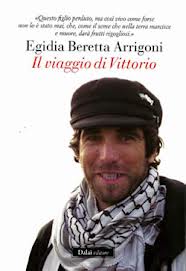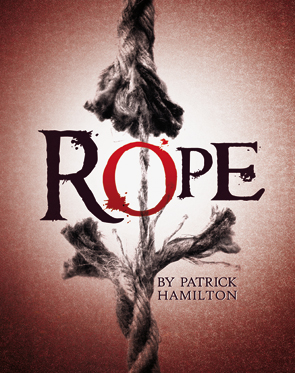Tel Aviv, Jaffa and the “vanished” villages
gennaio 24, 2014 in Palestina, Traduzioni
Written by Sonia Trovato, translated by Anna Zorzi Leggi il resto di questa voce →
gennaio 24, 2014 in Palestina, Traduzioni
Written by Sonia Trovato, translated by Anna Zorzi Leggi il resto di questa voce →
gennaio 14, 2014 in Palestina, Traduzioni
Written by Sonia Trovato, translated by Anna Zorzi Leggi il resto di questa voce →
gennaio 9, 2014 in Palestina, Traduzioni
Written by Sonia Trovato, translated by Anna Zorzi Leggi il resto di questa voce →
gennaio 7, 2014 in Palestina, Traduzioni
Written by Sonia Trovato, translated by Anna Zorzi Leggi il resto di questa voce →
settembre 22, 2013 in Traduzioni
Written by Sonia Trovato, translated by Anna Zorzi ![]()

I have no fangs because I’m not a wolf, that’s what Vittorio Arrigoni wrote in a composition at elementary school. And that is what one can learn from the biography written by his mother, Egidia Beretta, titled Il Viaggio di Vittorio (Dalai Editore, 2012,pp 185), an extraordinary portrait of her son, who spent his whole life fighting the “wolves” and defending the oppressed.
Although he became popular in the media and newspapers as a volunteer in the Gaza Strip, Palestine, his journey started in a small town in the province of Lecco, near Como Lake,where he was born in 1975 “with his little fist clenched up in the air” as if he wanted to foretell his future as a revolutionary. He was brought up in a family of small entrepreneurs who taught him the value of antifascism and of solidarity. When he left school, instead of going on seaside holidays to Ibiza or somewhere noisy with his friends, he went to Peru, where he started the first of a long series of work fields organized in Europe and Africa. Leggi il resto di questa voce →
settembre 15, 2013 in Traduzioni
Articolo di Mario Baldoli tradotto da Anna Zorzi ![]()
At first it was the journey in the Odyssey, the most popular adventure, on which our civilization is based. This is what Magris and Tabucchi, the most important and best-known Italian writers abroad, have been saying and writing for long. And the best-selling authors too, if we do not consider Saviano and Camilleri (his Montalbano’s tv series is broadcast on English Tv), who are nonetheless famous for a specific literature genre, and the Nobel Prize Dario Fo.
Then it was the generation of Sciascia, Calvino and Pasolini. And now it is the turn of Magris and Tabucchi, whose main works take inspiration out of the journey, as in Danubio or Girare per le strade. But these two authors have something else in common, besides the theme of the journey seen as the quest of the spirit, they both write essays and political contributions in newspapers and magazines. Both of them are committed writers. Tabucchi also wrote many short stories and novels, among which the unforgettable Sostiene Pereira, whose film version starred Marcello Mastroianni. As in the Iliad, Magris looks towards East. Born in Trieste, he is the best expert connaisseur of Central Europe, where all his works are set, starting from the first Il mito absburgico. Leggi il resto di questa voce →
aprile 10, 2013 in Approfondimenti
Written by Mario Baldoli, translated by Anna Zorzi ![]()
A national congress on the reclamation of polluted areas, promoted by Fondazione Micheletti and with the patronage of the Town Council, will take place in Brescia at the auditorium Santa Giulia, via Piamarta next 14th and 15th October. Topic of discussion will be the pollution in Brescia and surroundings, such as : the site of the factory Caffaro in town, the iron and steel industry affecting the River Mella, the waste incinerator (the biggest in Europe) of the local ASM (the Municipal Services Company), cement works, the future thermoelectric and atomic power stations in the area of Ghedi’s military airport.
In a public meeting organized by G9 last year, Brescia was said to be the third most polluted town in Europe (according to EU data). Today Brescia is confirmed to be the most polluted town in Italy.
The factory Caffaro, located near via Milano in Brescia and not far from the historical city centre, is the most responsible for the pollution. (see http://www.ambientebrescia.it/Caffaro.html). Leggi il resto di questa voce →
aprile 9, 2013 in Libri perduti o da tradurre

Oggi proponiamo un autore inglese, Patrick Hamilton (1904-1962), di cui in Italia è stato tradotto un solo libro. Romanziere, drammaturgo, sceneggiatore, Hamilton ha ispirato i film di Hitchcock Nodo alla gola (Rope) e di Cukor Angoscia (Gaslight). L’angoscia che Hamilton esprime in ambienti sempre lividi e bui, con lievi battute, con lo scontro nella famiglia e tra amici, ne fanno un precursore di Harold Pinter. Tra i tanti scrittori che l’hanno amato, basti il giudizio di Doris Lessing Hamilton è stato uno scrittore meraviglioso, gravemente trascurato.
Rope, primo successo teatrale di Patrick Hamilton, scritto nel ’29 e adattato in versione cinematografica da Alfred Hitchcock 20 anni dopo, è la storia di Brandon e Granillo, due giovani, ricchi, raffinati studenti di Oxford, tipici rappresentanti dell’upper-middle class inglese degli anni ’20. Ispirati dal mito del Superuomo, pianificano e portano a termine l’assassinio di un loro compagno di studi, Ronald Kentley, figlio di Sir Johnstone Kentley. Nascondono poi il corpo in una cassapanca che piazzano al centro del salotto del loro elegante appartamento nel quartiere londinese di Mayfair. Leggi il resto di questa voce →
"I sassi, il colore del cielo, le luci delle case, le auto e le altre cose in lontananza, il vigore delle attività umane, il colore dell'erba, le piccole creature viventi, le nuvole enormi che si rincorrono all'orizzonte, quel suono flebile che risuona nelle orecchie...forse tutti quelli che come me riescono a trarre dall'ambiente quel tipo di conforto, speciale e ordinario insieme, si rendono conto di vivere in questo mondo"
Banana Yoshimoto, "L'abito di piume"
